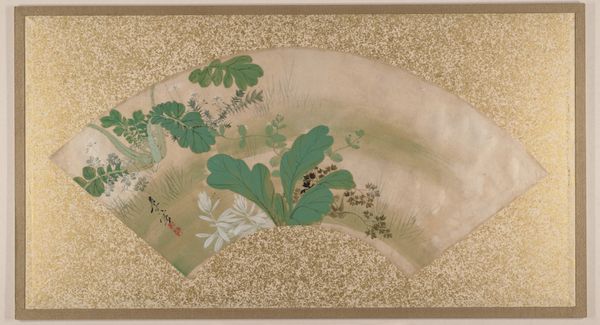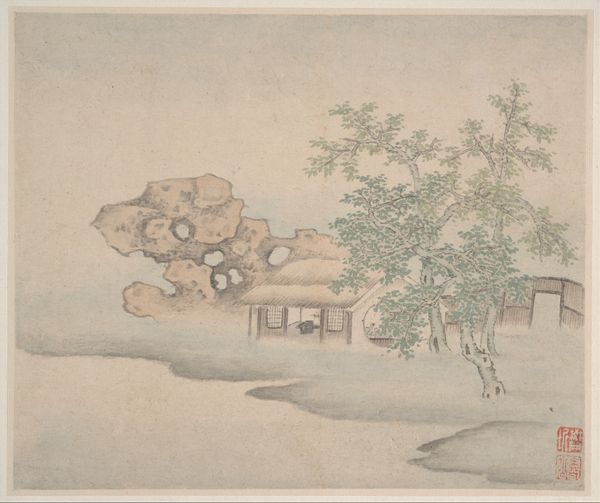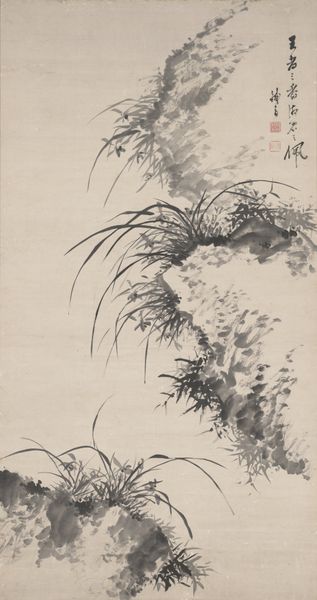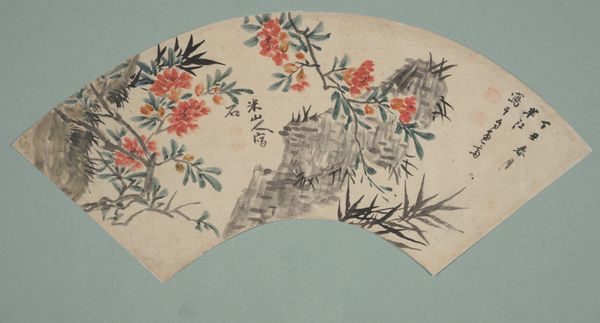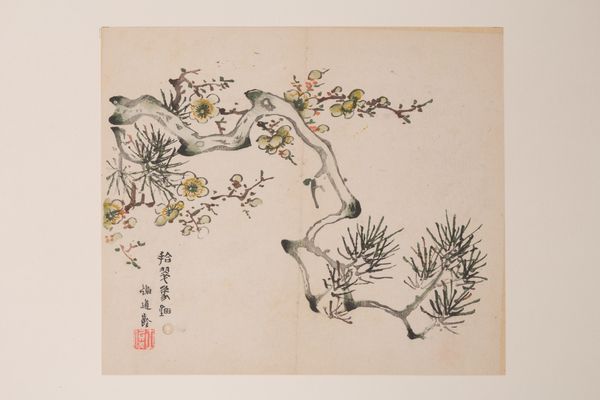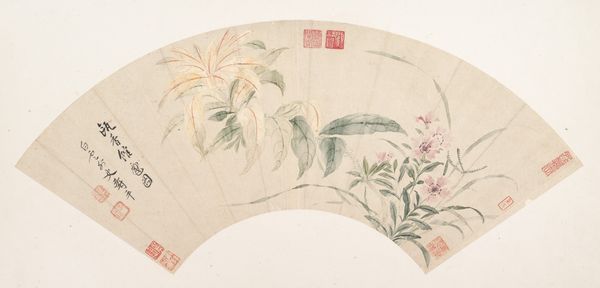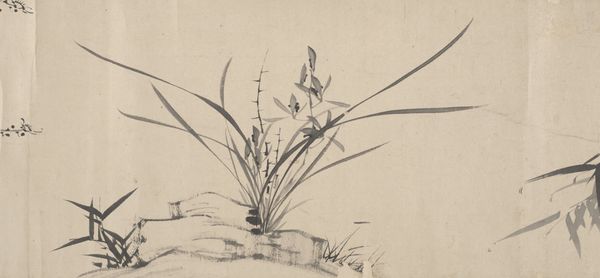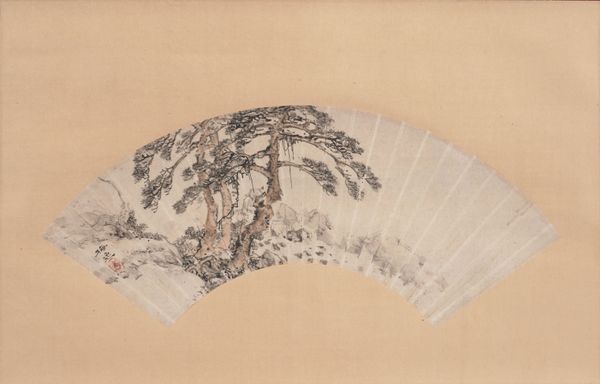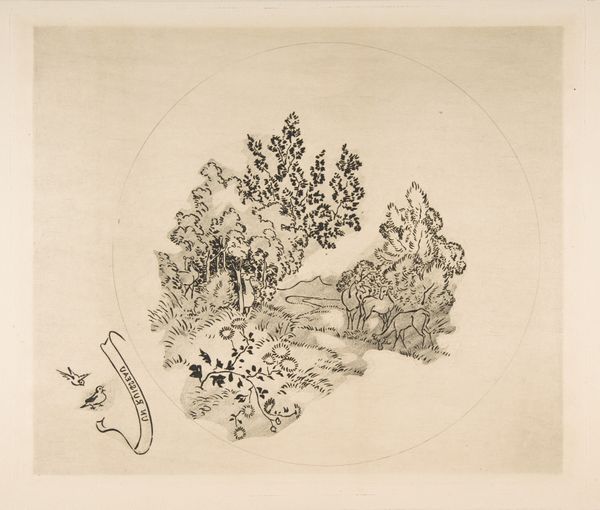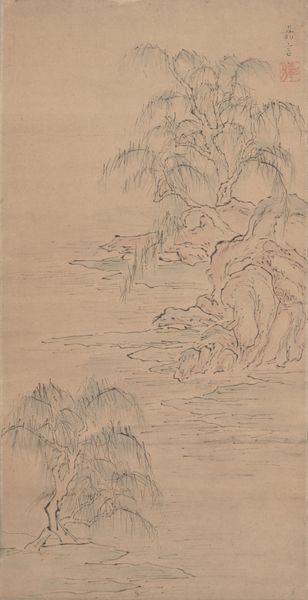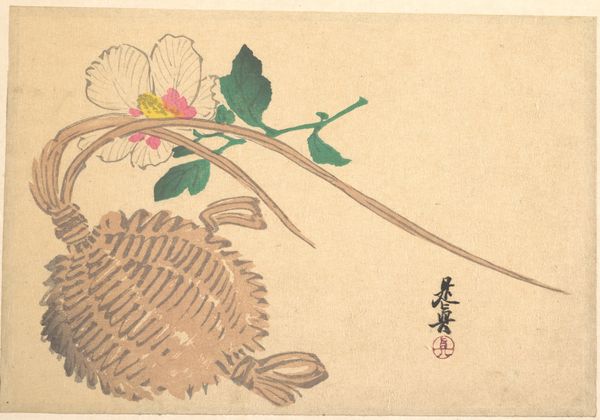
drawing, ceramic, ink
#
drawing
#
asian-art
#
ceramic
#
ukiyo-e
#
japan
#
ink
#
orientalism
Dimensions: 3 7/16 × 6 in. (8.73 × 15.24 cm)5 1/2 × 7 3/4 in. (13.97 × 19.69 cm) (mount)
Copyright: Public Domain
Yamamoto Baiitsu created this design for a covered bowl in 19th century Japan. Baiitsu belonged to the Nanga school of painting, who challenged the dominant Kano school that served the Shogunate. Nanga artists saw themselves as intellectuals, referencing Chinese literati painting, and often critiqued the commercialization of art. This design presents a vision of refined simplicity, drawing on the natural world. The bowl is decorated with pine trees and what seems to be a river landscape. Pine trees symbolize longevity and steadfastness, themes often associated with the literati. The covered bowl, elevated on small legs, becomes a miniature landscape itself, embodying the scholar's appreciation for nature. The Nanga school's rejection of official artistic doctrines and its emphasis on individual expression reflect broader social and cultural shifts in Japan at the time. To fully understand this artwork, we can consult historical texts, biographies, and studies of Japanese art institutions. Only then can we appreciate its place within a complex social and cultural landscape.
Comments
No comments
Be the first to comment and join the conversation on the ultimate creative platform.
